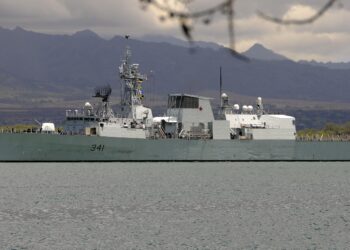AP, MOSCOW (AP)–Russia will need another 10 to 15 years to build a next-generation land-based ballistic missile, so Soviet-era weapons will remain the core of the nation's nuclear forces during that period, a top general said in remarks published Wednesday.
The head of Russia's Strategic Missile Forces, Col.-Gen. Nikolai Solovtsov, told the military daily Krasnaya Zvezda that most Soviet-built ballistic missiles had already served their designated lifetime. But he added that test launches and modern diagnostics are allowing them to remain on duty for years to come.
“The lifetime of these missiles isn't over yet, and they will continue serving the Fatherland until 2015,'' Solovtsov said. “The development of a new missile will take from 10 to 15 years, and we have this time in reserve.''
Solovtsov pointed at last year's successful test launch of an SS-18 missile that had served for 25 years and March's test-firing of a Topol missile following its 18-year service as proof of the Soviet-built missiles' capability.
He said his forces will also continue to receive the new Topol-M missiles, with another batch expected to go to a unit based near the Volga River city of Saratov. Their deployment, however, has lagged far behind earlier plans, and some analysts have warned that their numbers aren't sufficient to replace the aging weapons.
In an apparent move to soothe such fears, President Vladimir Putin said this month that Russia can modernize its aging strategic arsenal and maintain its nuclear deterrent potential for years, relying on fresh stockpiles of Soviet-built missiles.
Putin said that Russia has several dozen of what the West calls SS-19 Stiletto missiles, which were stockpiled without fuel and “in that sense are new.'' He said they will gradually replace older missiles that are taken off duty.
Echoing Putin's statement, Solovtsov said, without mentioning the United States, that the Stilettos would be able to overcome planned missile defense systems.
Russia was unable to persuade the United States to maintain the 1972 Anti-Ballistic Missile Treaty, which Washington abandoned to begin development of the national missile defense system.









